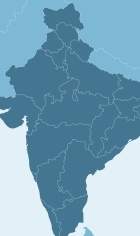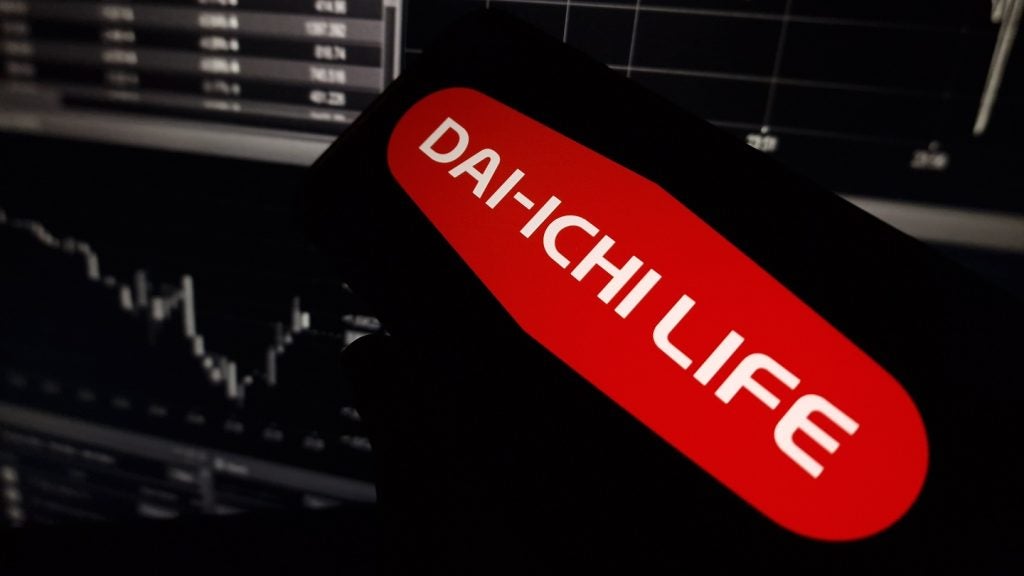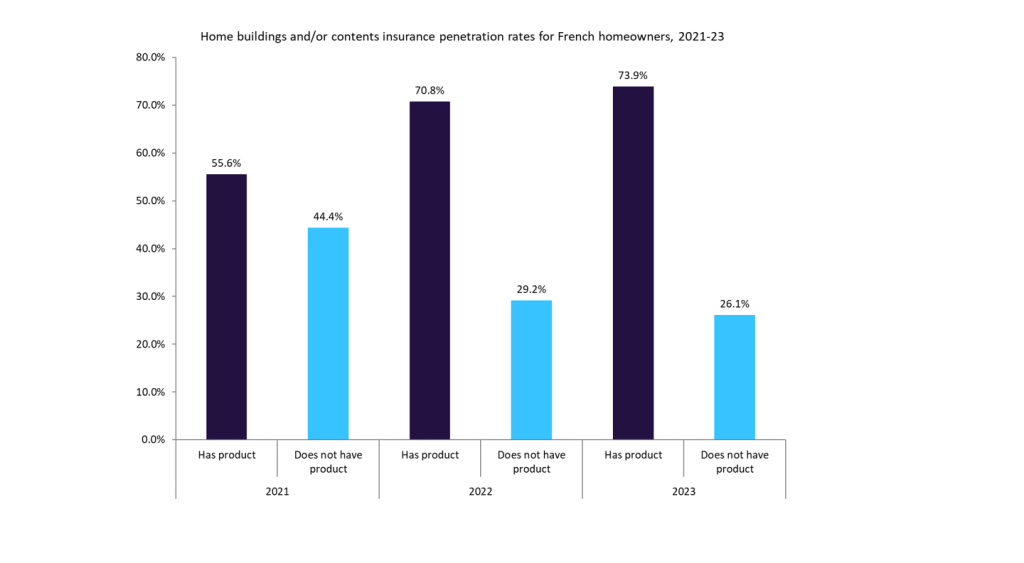
Rising life expectancy, strong economic development and the introduction of new distribution channels are among the key trends forecast to drive growth in India’s life market, according to the Life Insurance in India report, Key Trends and Opportunities to 2018, which is available on the Insurance Intelligence Center.
Strong fundamentals mean India’s life insurance market is set to grow from INR 3trillion (US$51.6 bn) in 2013, to INR4.1trn in 2018 – buoyed by an improving economy and changing regulatory conditions.
Life insurance was the largest segment in the Indian insurance market in 2013, accounting for 78.5% of the insurance industry’s gross written premium in 2013, following growth at a CAGR of 3.3% in 2009-2013.
The growth was primarily generated by the rapid expansion of group superannuation products, which registered a CAGR of 21.7% during 2009-2013. Steady expansion in the individual whole life category also contributed to the growth.
To fully understand the expansion forecast for India’s life market, it is necessary to view it in a macro-economic context.
This shows that India’s economic growth slowed in 2013 as a result of various domestic and international factors, such as high inflation, exchange rates and domestic interest rates, weak global demand, and a decline in investments.
In spite of the slowdown, the Indian insurance industry grew at a CAGR of 5.7% between 2009-2013 to value INR3.9 trillion (US$65.8 billion) in 2013.
Rising levels of employment, life expectancy and GDP growth, the introduction of flexible life insurance plans, and the population’s increasing affluence are expected to support India’s life insurance market between 2013-2018.
How well do you really know your competitors?
Access the most comprehensive Company Profiles on the market, powered by GlobalData. Save hours of research. Gain competitive edge.

Thank you!
Your download email will arrive shortly
Not ready to buy yet? Download a free sample
We are confident about the unique quality of our Company Profiles. However, we want you to make the most beneficial decision for your business, so we offer a free sample that you can download by submitting the below form
By GlobalDataFor example, average life expectancy rose from 66.1 years in 2009 to 67.1 in 2012, and is expected to reach 68.8 years by 2017.
Meanwhile, GDP at current prices increased from INR64.8 trillion (US$1.3 trillion) in 2009 to INR100.2 trillion (US$1.9 trillion) in 2012, and is expected to reach INR182.6 trillion (US$2.5 trillion) in 2017, indicating a growing economy and rising disposable incomes.
The introduction of the Direct Taxes Code (DTC) and the increasing demand for health insurance products are also expected to drive industry growth between 2013-2018.
The DTC’s introduction will provide higher tax benefits to consumers, increasing the demand for insurance cover, encouraged by tax exemptions and rebates attached to insurance products.
Growth drivers
Looking ahead to 2018, other trends likely to boost India’s life insurance market further include
– A proposal to increase the FDI limit from 26% to 49%
– Strong demand for life insurance products
– The market’s low penetration rate
– The introduction of new distribution channels
In July 2013, for example, the IRDA proposed an increase in the FDI limit from 26% to 49% in order to improve, promote and develop the domestic insurance industry.
The increase is expected to encourage global insurers to invest in the segment, intensifying competition between 2013-2018.
Vivek Jalan, director-risk consulting, India at Towers Watson, says: “Over the long term, increased capital and foreign know-how will be beneficial for product innovation, improved customer service mechanisms and increasing insurance penetration in the country.”
Strong demand for life insurance products and an increase in the working population should also fuel growth in India’s life market.
With the country’s working-age population is expected to reach 64% by 2021, rising income levels and life expectancy should increase demand for life products.
Low penetration rates provide further ample scope for the development of new business in the life segment between 2013-2018.
Indian life insurance penetration stood at 2.67% in 2013 much lower than developed countries such as the US and UK where penetration rates stood at 3.50% and 8.68% respectively.
Finally, the introduction of new distribution channels, such as direct marketing, telemarketing and online sales are expected to drive growth in the Indian life market.
Mobile offices are another popular distribution channel, where vans act as mobile retail shops to sell insurance. Alegion Insurance Broking, for example, is a prominent user of this channel.
Challenges
India’s life insurance market also faces several challenges. For example, the introduction of standards equivalent to Solvency II may be delayed in India, as only state-owned and large private insurers are prepared for them. It may therefore be four to five years before other domestic insurers are ready.
In February 2013, the IRDA proposed a lower solvency margin for life insurers of 145%, down from the current 150%. Solvency II standards include assessment of a specific insurer’s risk by the regulator, supervision of the entire market, and monitoring of insurers’ capital requirements.
Another challenge for the industry is that issues such as malpractice in policy issuance by insurers have also led to several penalty charges from the IRDA, with pressure on agents to sell policies with higher commissions leading to continued mis-selling.
According to the IRDA’s2012-2013 annual report, 341,012 complaints were reported for the life segment, compared with 309,613 in 2011-2012.
The 2012-2013 IRDA annual report also states that, of a total of 168,482 complaints for unfair business practices, 42,598 were specific ULIP-related complaints.
Furthermore, although there was a rise in bancassurance agreements during 2009-2013, constant product redevelopments have added complexity and difficulties for banking staff, especially in terms of marketing products.
Training bank staff on selling insurance products, for example, is a significant challenge for insurers, and is usually very expensive. Moreover, selling through bank branches requires support and motivation from banking partners, and not all bank networks are permitted to sell insurance.
Finally, India’s population of 1.25 billion, spread over a large area, impedes comprehensive insurance cover. The coverage of microinsurace in economically challenged areas of India is also very low.
Although life insurers such as LIC and Aviva offer microinsurance schemes aimed at the rural population, more products need to be introduced to increase awareness over between 2013 and 2018.
Distribution channels
The rapid development of channels such as agencies, direct marketing and bancassurance contributed to the development of India’s life insurance market during 2009-2013.
Agencies generated the majority of the Indian life insurance market’s new business written premium in 2013, at 46.4%.
The strong preference for agencies is primarily due to their large client base, strong brand reputation, and relatively low-cost sales forces.
Demonstrating the importance of agencies, Life Insurance Corporation of India, (LIC) the largest life insurer in India in terms of gross written premium, had an agency network of 1.3 million as of March 2012.
Overall, the new business written premium generated through agencies stood at INR523.1 billion (US$8.9 billion) in 2013 and is expected to reach INR548.3 billion (US$7.2 billion) in 2018, at a forecast-period CAGR of 0.9%.
Direct marketing was the second-most-popular distribution channel and accounted for 37.7% of the segment’s new business written premium in 2013, increasing from INR284.4 billion (US$5.9 billion) in 2009 to INR424.6 billion (US$7.2 billion) in 2013, at a CAGR of 10.5% between 2009-2013.
Bancassurance was the third most popular distribution channel in 2013. The channel accounted for 12.4% of the segment’s new business written premium in 2013, mainly due to the vast range and complexity of products offered by insurers.
New business written premium generated through brokers stood at INR13.4 billion (US$0.23 billion) in 2013, and is expected to reach INR20.1 billion (US$0.27 billion) in 2018, registering a forecast-period CAGR of 8.5%.
In addition, shopping malls, post offices, government agencies and para-banking companies also contributed to the segment’s growth.
Looking ahead, while most channels are expected to record growth in written premium value, agencies are anticipated to post a lower CAGR than other channels. This reflects insurers’ efforts to control distribution costs.
Regulation
The Indian government is planning to introduce numerous amendments to the existing insurance act through the Insurance Laws (Amendment) Bill 2008.
The bill was approved by the Union Cabinet of India in October 2012, and was expected to be introduced in the Rajya Sabha, the upper house of the Indian parliament on 23 April 2013.
However, in early December 2014 , The Financial Times reported that India’s prime minister Narendra Modi hopes to push through the bill in parliament in December 2014.
Some of the key changes expected to be implemented by the Insurance Laws (Amendment) Bill 2008 include the following:
– Health insurance is expected to be recognized as a separate line of business with specific legislation regulating the health insurance category.
– The minimum capital requirement for health insurance are proposed to be reduced from INR1 billion (US$18.7 million) to INR500 million (US$9.4 million).
– An increase in the foreign investment ceiling in Indian insurance companies to 49%, from the existing 26%,
– Foreign reinsurance companies operating as reinsurers through their branch or branches in India should have minimum capital of INR50 billion (US$0.9 billion).
Ashvin Parekh, managing partner of ashvin parekh advisory services (APAS), explains that life insurance in India is viewed as a savings rather than a protection instrument.
In that context, he says he has seen a growth of unit-linked products as well as some growth of traditional products including single premium products.
Parekh says: “I am certainly seeing the growth of unit-linked products and a key reason for this is that the capital markets in India have started performing quite well.
“After the change in the government, there has been an expectation of improved economic performance and that has resulted in the capital markets performing well. I am certainly seeing unit-linked products are likely to grow in India over the next 2-3 years.”
Asked about the impact of raising the FDI cap, Parekh says: “I am not seeing more foreign players entering the market. But I am seeing foreign partners consolidating their position in India.
The exception is health insurance. The FDI bill will also recognise health insurers as standalone companies. We are going to see the emergence of standalone health insurance companies.”
Overall, Parekh expects life insurers in India to grow at a rate of 12-13% per annum. However, with inflation currently at 6-7%, he explains that real growth will be of the of the order of 5-6% for life insurers.
Meanwhile, he expects India’s health insurance sector to grow at approximately 16-17% over the next few years.
Tata AIA Life Insurance tells Life Insurance International that it expects India’s protection and health insurance to experience double digit growth in the next couple of decades.
The insurer explains that as hospitalisation, for example, is getting more and more expensive, health insurance will experience double digit growth for the next few decades.
In terms of the challenges facing the sector, points to a lack of innovation in products; the time taken for approval of product is around 6 months; the high turnaround of agents and the increasing cost of distribution.
Jalan concludes by saying that the Indian life insurance sector has “enormous potential” in the long run given the industry’s low level of penetration.
Given buoyant stock market trends, he notes that insurers could again focus on unit-linked products.
Fast facts:
– The Indian insurance industry is supervised and regulated by the Insurance Regulatory and Development Authority (IRDA).
– The IRDA (Life Insurance-Reinsurance) Regulations 2013 made it mandatory for life insurers to reinsure with domestic reinsurer GIC Re. The percentage of the cession will be determined by the IRDA subject to a maximum of 30% of the insured sum.







